Letter from Llanon
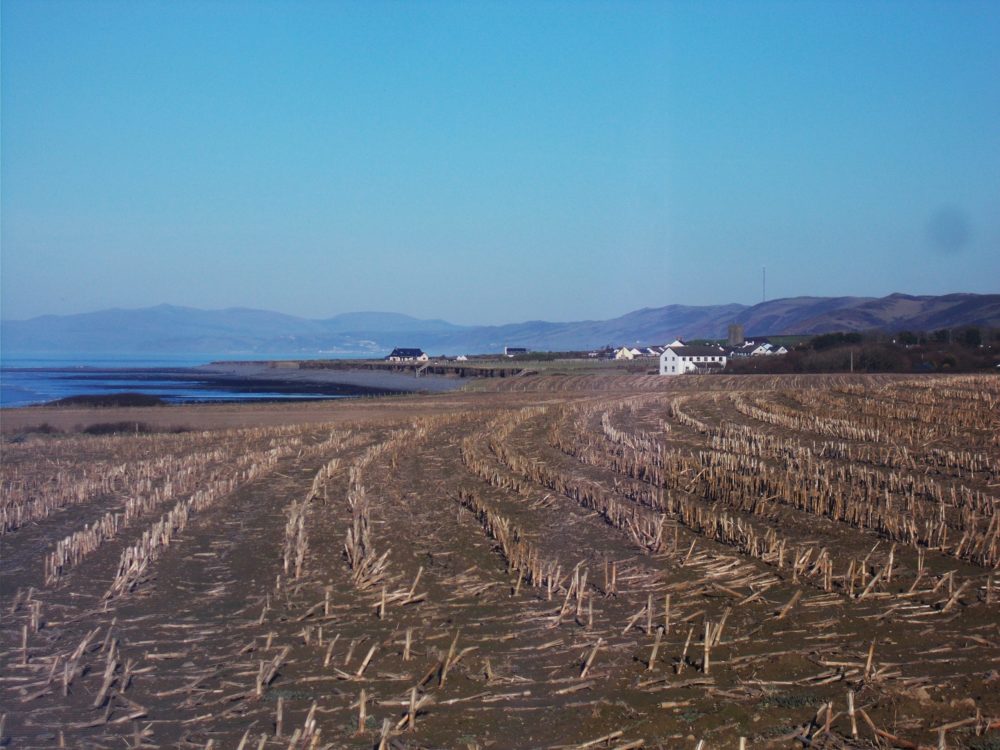
Julie Brominicks
‘That’s where we found the flint scatter, in that field by those stumps’ says Martin Bates.
‘It would have been a strategic point overlooking the stream. They would heat stones then drop them in a trough of water to boil it. The stones would shatter. They brought the flint up from the beach. It came in with the ice from Antrim probably.’
Martin is a Pleistocene Geoarchaeologist (or ‘Ice-Age Archaeologist’) who grew up in Aberystwyth.
His primary-school headmistress was from Llanon, he’s lived here two years and it feels like home.
Ceredigion-Museum curator Carrie Canham has introduced us because I said I liked the feel of Llanon’s history, and that there’s something about the cliffs.
Dewi Sant
Llanon is the settlement between the rivers Peris and Cledan where some say Santes Non gave birth to Dewi Sant.
Whizz through on the A487 and you might not see reason to stop. Approach on foot by coast-path and you do. Herons hunting in medieval fish-traps; the stone walls and a few relict fence-posts constructed in the intertidal zone by Ystrad Fflur (Strata Florida) monks.
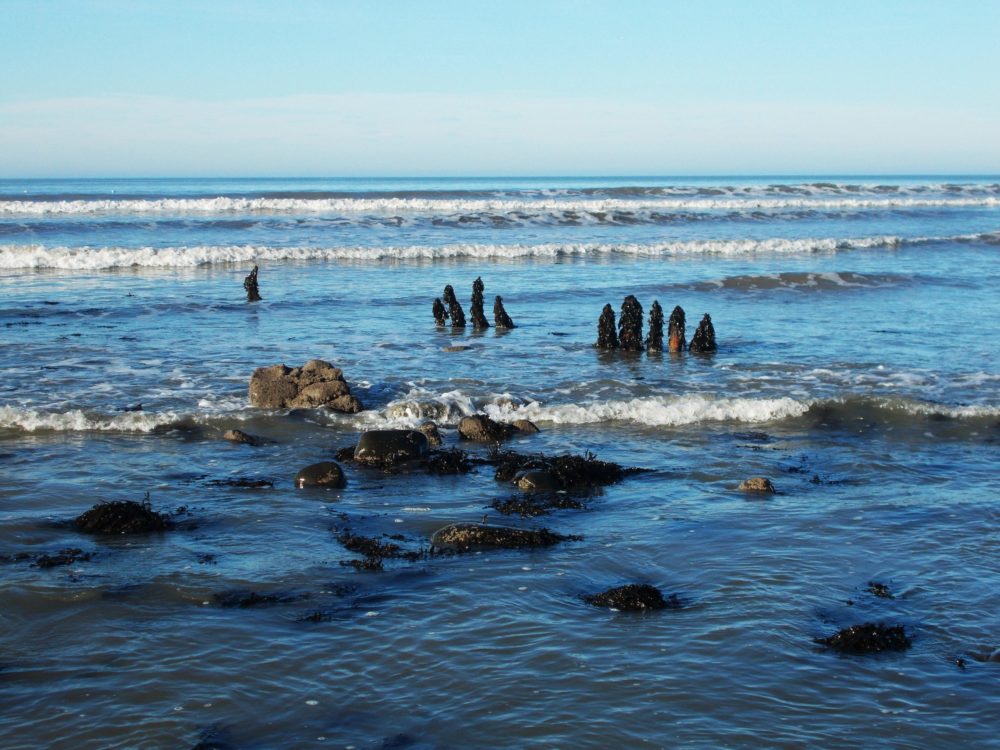
The 19th-century strip-fields, or ‘slangs’. In adjoining Llansantffraed, the church and spectacular limekilns, this soil being acidic.
‘We know that people were in Britain for at least eight or nine cycles of Ice Age followed by warm periods’ says Martin. ‘In the last Ice Age the landscape was so different. Cardigan Bay existed in warm periods though its normal condition is not to have any sea in it.
‘The ice was thick over Wales. What that ice sheet does is essentially bulldoze the landscape. Except for bits of Pembrokeshire that were ice free. And anything in caves.
“And down on the very margins of ice, on river gravels by the Severn Bridge. So our evidence of hunters from earlier interglacials in Wales comes from south Pembrokeshire or caves near the North Wales coast.’
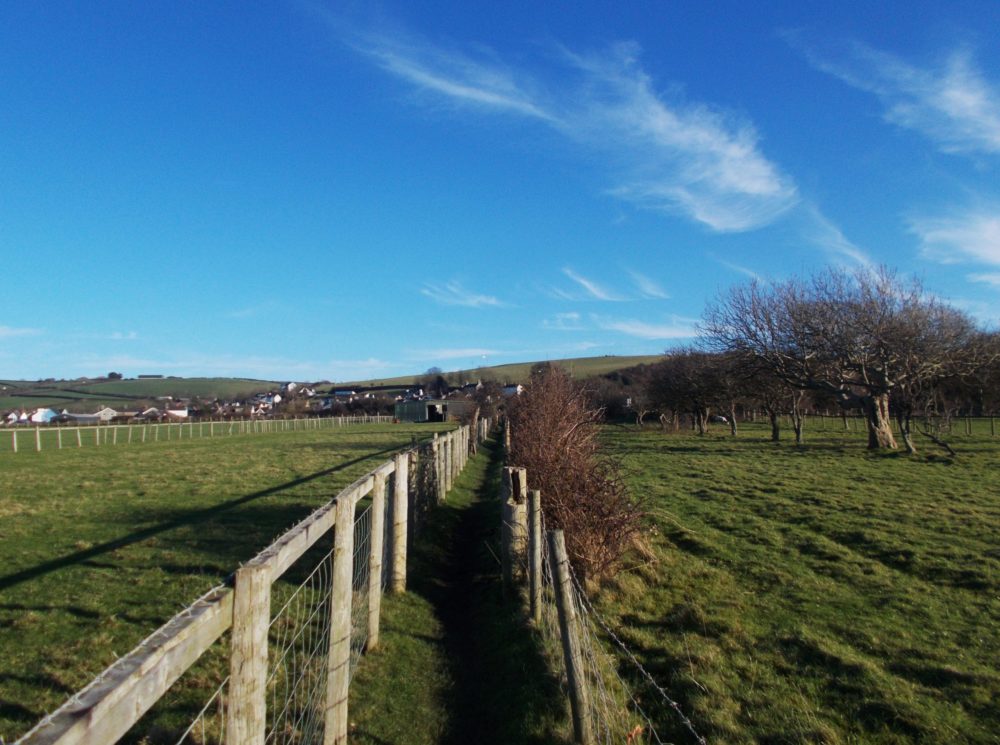
The Welsh and Irish-Sea ice sheets met about two miles from this beach. ‘Most of these pebbles are rock from the Trefechan Formation. Lots of quartz in the veins. Possibly some volcanic rock.’ Martin smashes one against another. ‘Igneous granite came from west of Scotland with the ice. That’s a piece of flint.’ Among the pebbles, a holly leaf, Stella can, feather. Mermaids purses and half a crab.
‘After the ice retreated about 15,000 years ago’ says Martin, ‘a new eco-system started from scratch. Plants arrived, then animals.’ Turnstones flicker at the water’s edge. What about bird remains? ‘You don’t find bones in this part of the world because of the acidic ground conditions. In this area, we’re relying on finds of pollen, leaves, insects.’
History
History is palpable in Llanon. I chance upon Dai Morgan by the church. ‘That was a shipyard’ he points. ‘Wedi mynd dros y byd y gyd.’ Several houses were named after ships according to Dylan in The White Swan. Having been in the Navy, Steve from Chichester is awed by Llanon’s maritime achievements. ‘I’ve got a map in the archive’ he tells me, ‘showing where some of these ships sank.
‘I’ve been in the South Atlantic. You get a 20-30-foot swell and on top of that a 20-30-foot wave. Weeks of that. The ship would stagger up the wave and then slam down off the top. To do that in a small wooden ship!’
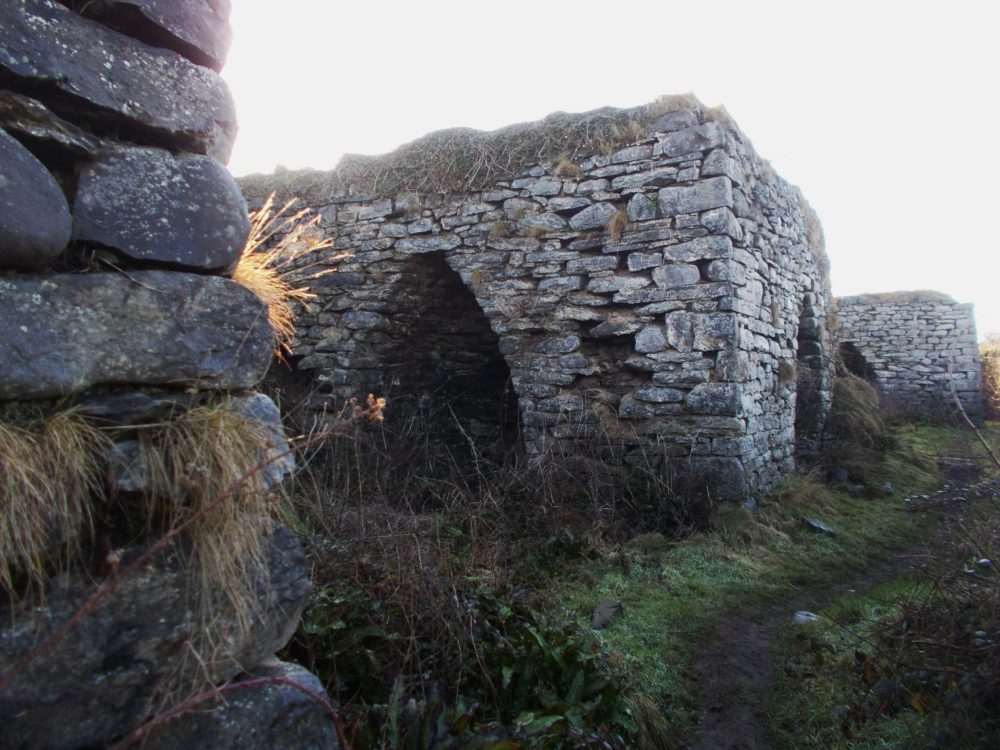
No ships now, and previously, no sea. ‘They’ve been doing a marine survey out in Cardigan Bay’ says Martin. If we removed the sea you’d see a valley from Aberystwyth made by the Ystwyth and Rheidol. We know this from the seismic profiles. It’s called the Trawling Grounds or the fishermen call it The Gutter. They drilled a hole and hit peat, which only forms in freshwater environments. So we know Cardigan Bay was dry about 10,500 years ago and there was a marsh.
‘Hunter-gatherers were hunting and fishing out there. We don’t know when exactly the first humans came back to Ceredigion. We’ve found knapped flint and pollen and charcoal in Aberystwyth. People were disturbing and burning vegetation; but the burning could have been from forest fires. By 7,000 years ago, the sea had risen.
‘Unfortunately it would cost maybe £100,000 to get a boat stable enough to drill off. Also there are dolphin conservation issues.’ We gaze at the sea. ‘I’m sure there’s archaeology out there.’
It’s peaceful away from the road, I like to spend time in the slangs. Sheep raise their heads as I pass. Goldfinches, a redstart. Bramble provides refuge for a hidden bird that sounds like a piggybank being shaken.
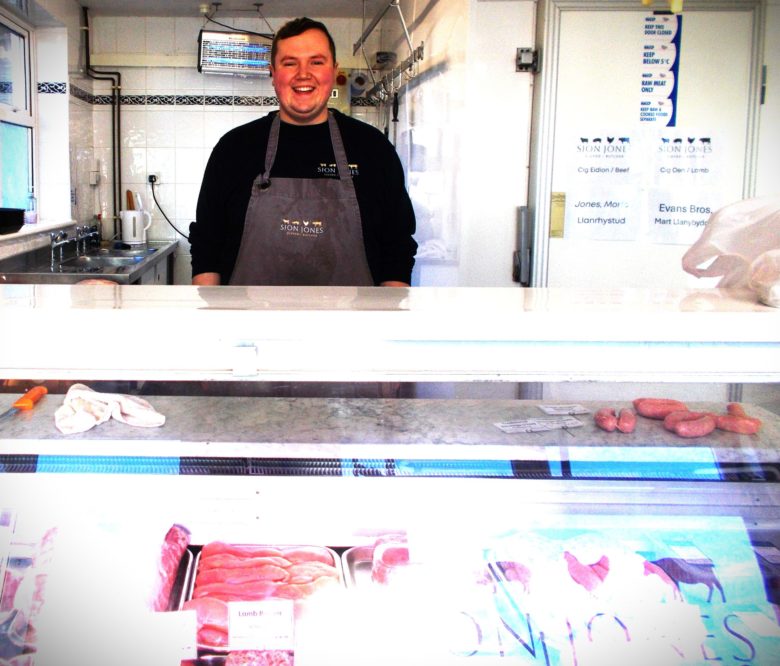
In the village, Sion Jones is taking delivery of pigs from South Wales that swing next to one from Tregaron. Freshly-made sausages gleam under glass. ‘Lot o hanes yn yr ardal hwn especially y Merched Rebecca mi baswn i ddweud’ Sion says referring to the 19th-century protests against crippling tollgate taxes. It’s important to the farming families he explains.
Members of his family went on trial. ‘Nawr eto amser bregus.’ A banner outside his shop decries the inheritance tax. ‘Hanes cadw fynd’ he smiles. ‘History keeps going.’
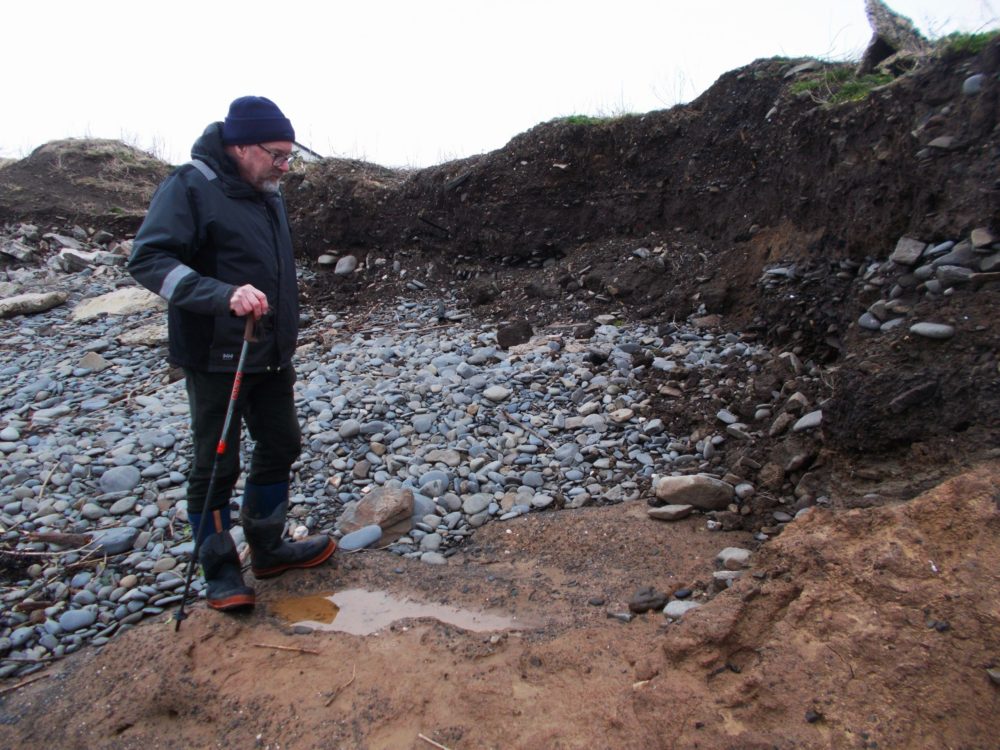
The cliffs are low and earthy. ‘To me this is like a book’ says Martin. ‘This red stuff at the bottom is what we call till. It’s the debris that’s been pushed in front of the ice or under it.’ Sediments washed down by the rivers sit on top of it.
‘This was set down, it weathered, it cracked. This gravel in the cracks was transported by small rivers.’ He indicates which layer was permanently frozen and which froze and thawed annually.
‘This darker stripe near the top is when farming starts and the high ground cleared of trees. The soil erosion washed down the rivers; this is probably Bronze Age.’
We step back and regard the cliffs. ‘The whole of Llanon sits on this.’
Time for tea. Martin suspects the gravel outside his rented hew house comes from dredging in the English Channel. He kicks it about, finds a shell.
Support our Nation today
For the price of a cup of coffee a month you can help us create an independent, not-for-profit, national news service for the people of Wales, by the people of Wales.




